Most utility cables have a very strong resemblance to each other because the majority of them have the same outer covering – black polyethylene. This can make cable identification a bit of a choir. However, there are differences in their appearance, even with those that are black polyethylene.
AERIAL CABLE ID

 Only distribution pole lines have underbuilt communication cables.
Only distribution pole lines have underbuilt communication cables. Primary electric is the top wires on a pole line. Secondary electric are the cables coming out of a transformer, but may still run along the pole line.
Primary electric is the top wires on a pole line. Secondary electric are the cables coming out of a transformer, but may still run along the pole line.  You can get a general idea of the amount of voltage on aerial wires by the structure they are attached to. The higher the voltage, the higher the wires are off the ground, and the more distance between the wires.
You can get a general idea of the amount of voltage on aerial wires by the structure they are attached to. The higher the voltage, the higher the wires are off the ground, and the more distance between the wires.PRIMARY POWER
Primary power cables are always the top cables on a pole line. These are also the only cables which almost never have an insulation. These are open bare wire, usually aluminum.
They are also the only cables that attach to the cross arms of the utility pole.
SECONDARY POWER
There may also be a secondary power cable on the pole line. These are easily recognizable because they will be coming from an aerial transformer. These will also always be in the second position down from the top. Therefore, all power cables are at the upper portion of the pole line – primary cables on top – and secondary cables below.
COMMUNICATION CABLES
Communication cables are always below the power cables. This is to prevent the communication cable workers from having to reach over power lines to do their work. Typically, there will be a safety zone between the lowest power lines and the communication cables, though this may not be a wide spacing.
TELEPHONE CABLES
Telephone cables are usually the top communication cable. This is because of the extensive period in which telephone was the only communication cables. Coaxial and fiber cables came along much later.
There can still be old lead telephone cables, but those are very rare today.
The only telephone cables you are likely to see will be black polyethylene, and rather thick. They have a rectangular splice box.
FIBER OPTIC CABLE
Fiber optic cables always have that black polyethylene jacket, and are rather small in diameter.
Their most noticeable feature are the snowshoe loops, a pair of hoop attachments where the fiber cable is looped back and forth multiple times.
Fiber splice cases are usually more rounded on the ends than phone splice cases.
Fiber cables also often have orange bands attached at various places along the pole line to quickly identify them.
COAXIAL CABLE (Cable TV)
Coaxial cable can be a bare aluminum outer covering, or an insulated black polyethylene jacket. It simply depends on how old the coax is.
Several items help to identify coaxial cable, the most noticeable are the tension loops which are common with the aluminum cables. They look like a dipped area that appears to be almost accidental, but their purpose is to keep the cable from becoming too taught in extreme weather conditions.
Coaxial splice cases are almost always a bullet-shaped case with all of the cables and services coming out of the same end, the flatter end.
Coax also has regular amplifiers, galvanized steel cases with straight slotted vents on the side.
Coaxial cable also has splitters. These are usually a light olive green and rather squared in shape. They also tend to have numerous cables and services coming from the splitters.
FIBER TO COAXIAL
Fiber optic communication often converts downstream to telephone cables, but this requires large cabinets which are going to be ground-mounted.
However, fiber can be converted to coaxial with only a small amount of electronics, so these are often on pole lines. These fiber nodes are similar to the coaxial amplifiers, but they have wavy raised vents on the side instead of straight line. So, these are fiber cable in – and coaxial cable out.
The website www.annsgarden.com/poles/poles contains far more material on aerial cable layouts. It includes information, photos, and illustrations of not only standard pole layouts, but also rare and odd features.
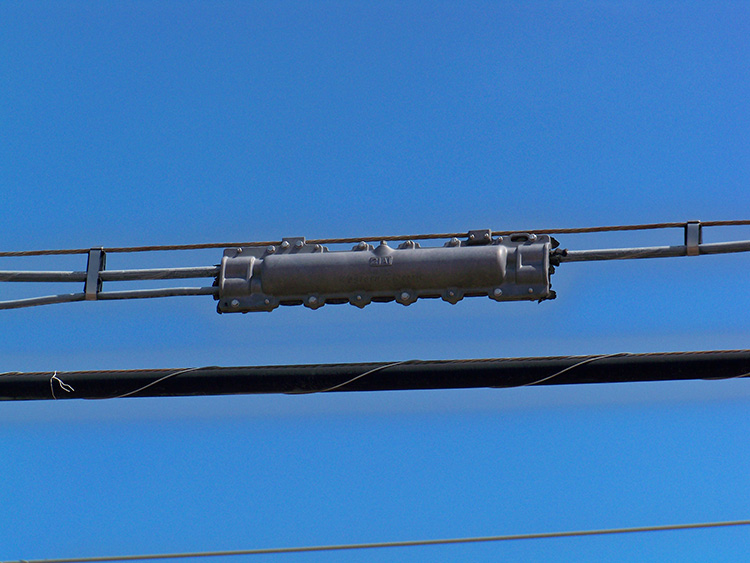 Old telephone cable splice case.
Old telephone cable splice case. Snowshoe loop for fiber optic cable.
Snowshoe loop for fiber optic cable.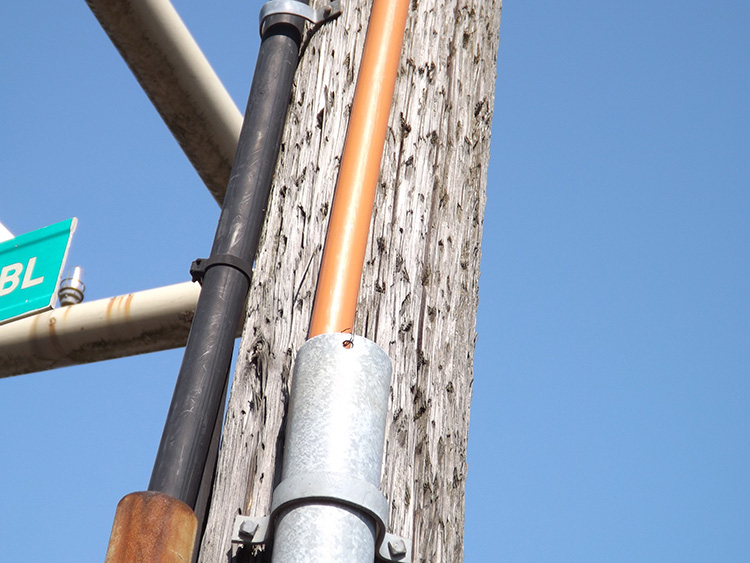 Telephone cable on left - fiber cable in conduit on right.
Telephone cable on left - fiber cable in conduit on right.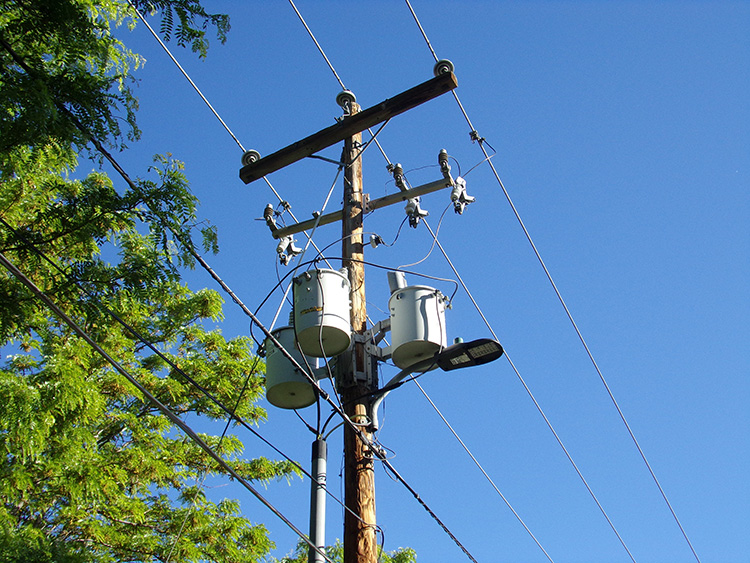 Three phase power coming down the pole.
Three phase power coming down the pole.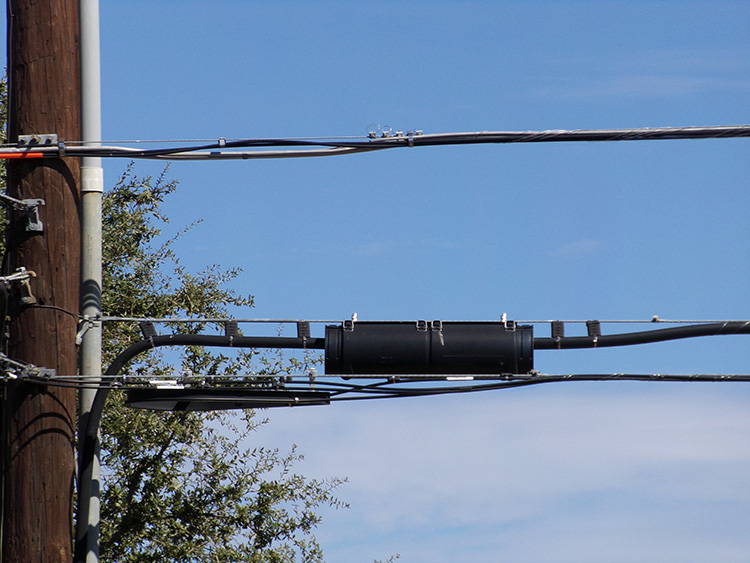 Newer phone cable splice case.
Newer phone cable splice case. CATV node - fiber cable in and coaxial cable out
CATV node - fiber cable in and coaxial cable out Three phone cables - PIC cable in center, and different types of armored phone cable on right and left.
Three phone cables - PIC cable in center, and different types of armored phone cable on right and left.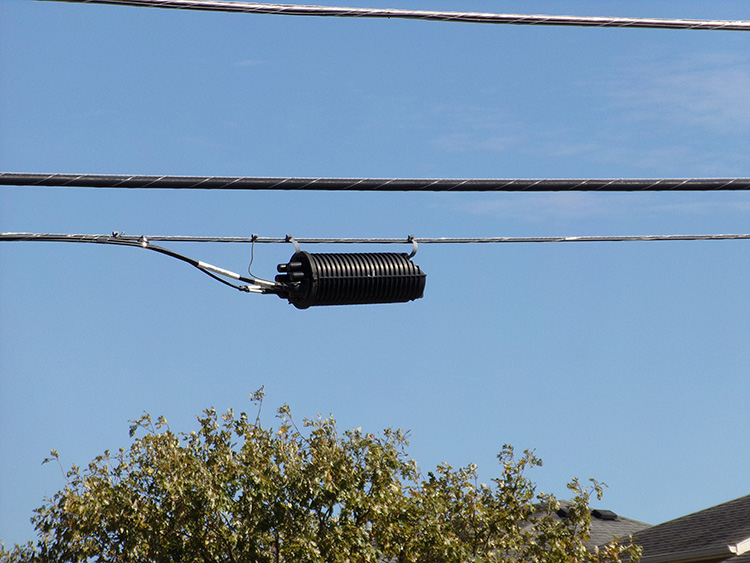 Fiber cable splice case.
Fiber cable splice case.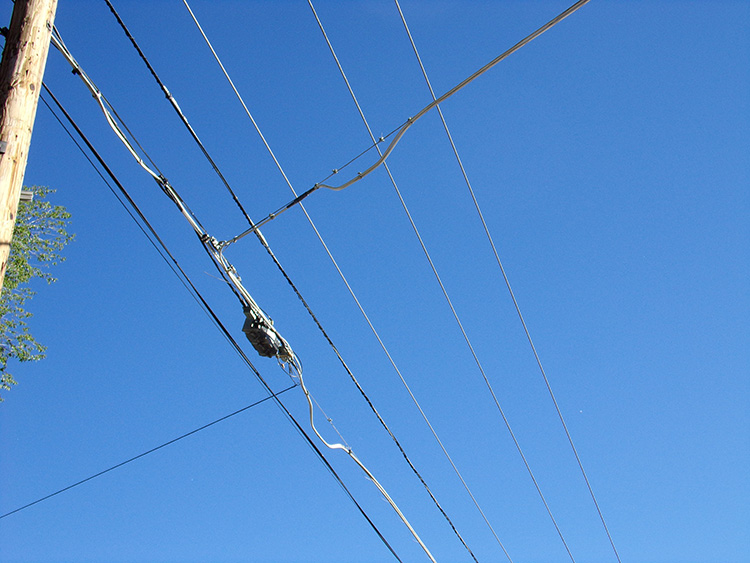 Coaxial splitter and two expansion loops.
Coaxial splitter and two expansion loops.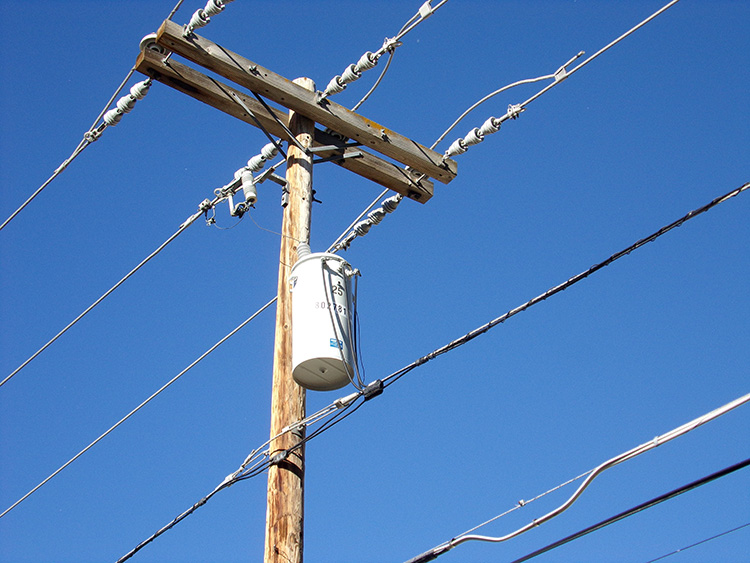 Single phase electric transformer.
Single phase electric transformer.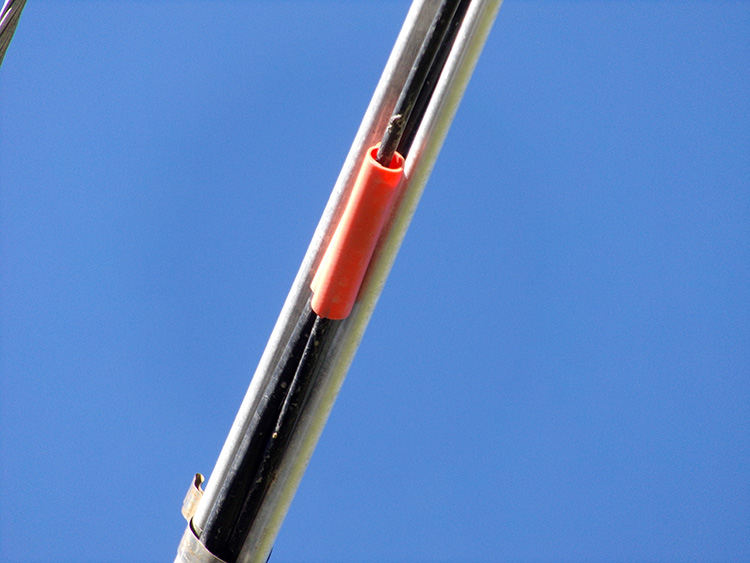 Fiber cable often has orange bands attached to the cable.
Fiber cable often has orange bands attached to the cable.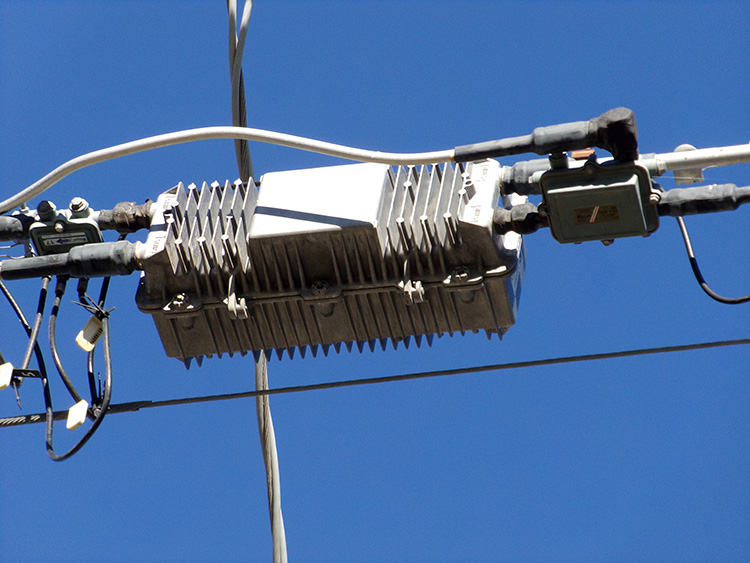 Coaxial amplifier with splitters attached on each side.
Coaxial amplifier with splitters attached on each side.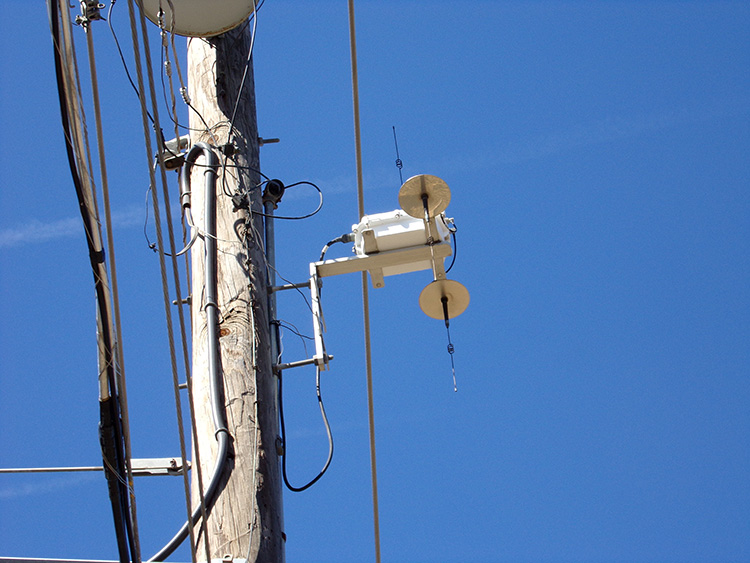 5G network antenna.
5G network antenna. Amplifiers are coax in and coax out - Nodes are fiber in and coax out.
Amplifiers are coax in and coax out - Nodes are fiber in and coax out.
